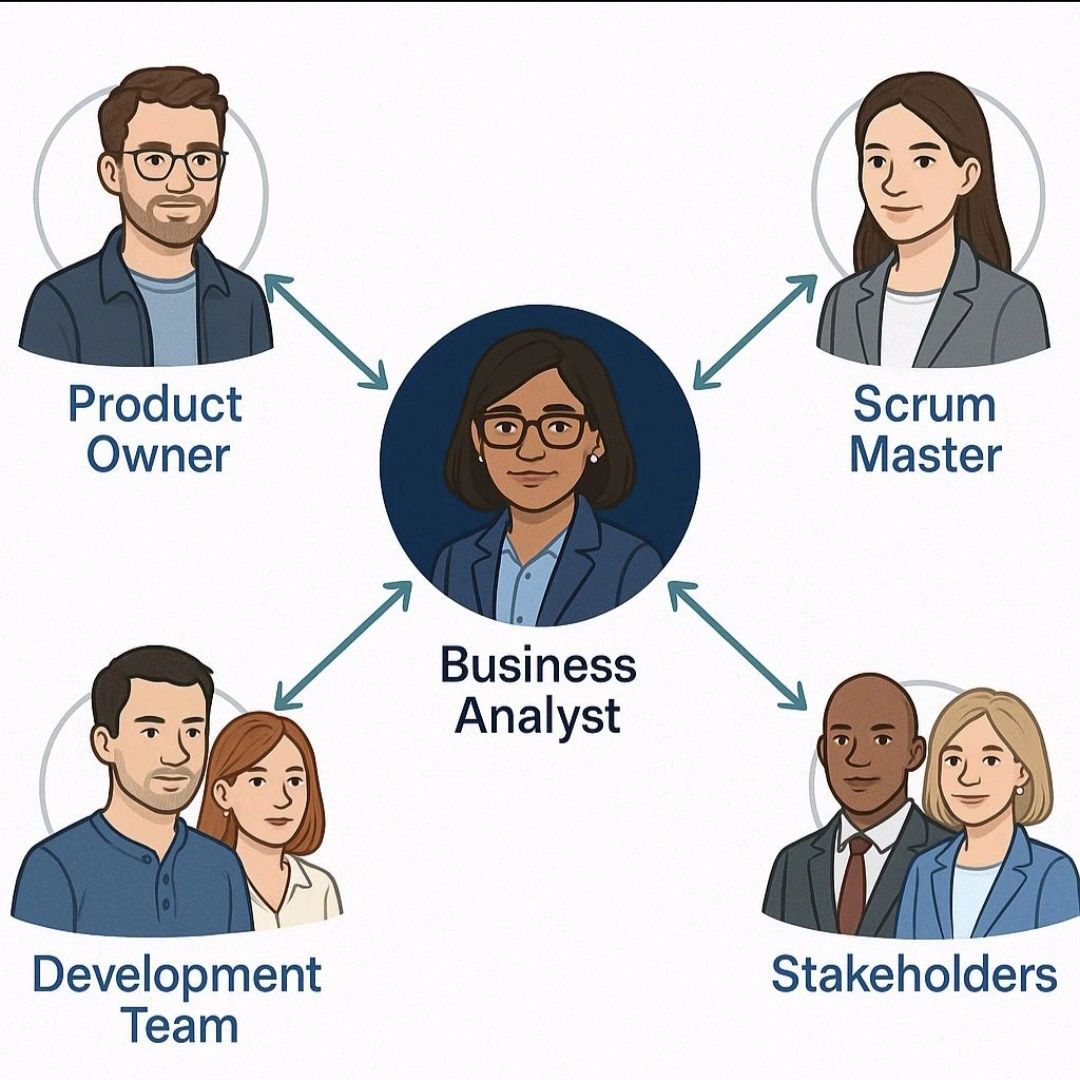
In the rapidly evolving landscape of product development, agility is no longer just a buzzword; it’s a fundamental necessity. Agile methodologies have transformed how teams deliver value, emphasizing speed, flexibility, and continuous improvement. At the heart of a successful Agile team, orchestrating seamless communication and understanding across diverse roles, stands the Business Analyst (BA).
The BA serves as the vital bridge, connecting all key players in the product development lifecycle, ensuring that vision translates into tangible, value-driven outcomes. This pivotal role fosters understanding, drives clarity, and ensures that every voice is heard and translated into actionable solutions. Let’s explore the essence of how a Business Analyst collaborates and communicates within an Agile ecosystem:
1. Strategic Partner to the Product Owner: The Business Analyst works hand-in-hand with the Product Owner, forming a critical partnership. Their collaboration focuses on refining the product vision, ensuring it’s clear, coherent, and aligned with overarching business objectives. The BA excels at translating high-level business needs into detailed, actionable user stories, which form the building blocks of development. Furthermore, they play a crucial role in prioritizing the product backlog, ensuring that the most valuable features are tackled first, maximizing return on investment.
2. Facilitator for the Development Team: For the Development Team, the Business Analyst is the go-to person for clarity and context. They diligently clarify requirements, ensuring that the team has a crystal-clear understanding of ‘what’ needs to be built and ‘why.’ The BA also contributes by ensuring technical feasibility is considered early in the process and supports the delivery process with continuous feedback, helping to refine solutions and maintain high quality standards throughout the sprint.
3. Collaborator with the Scrum Master: While the Scrum Master champions the Agile process and removes impediments, the Business Analyst complements this role by ensuring the clarity of work minimizes potential blockers stemming from misunderstanding. They collaborate to enhance overall team cohesion and communication, contributing significantly to smooth sprint execution and the efficient delivery of valuable increments.
4. Liaison with Stakeholders: Beyond the immediate development team, the Business Analyst serves as the primary interface with various stakeholders. This involves meticulously gathering requirements from diverse perspectives, understanding their pain points, and meticulously analyzing their feedback. Through this crucial engagement, the BA ensures that the proposed solutions are not just technically sound, but also perfectly aligned with overarching business goals and deliver genuine value to the end-users.
A truly successful Business Analyst transcends the traditional role of a mere requirement gatherer. Their impact lies in their ability to foster profound understanding across all parties, driving clarity even in complex scenarios, and ensuring that every voice—from the executive suite to the end-user—is heard, acknowledged, and skillfully translated into value-driven outcomes. They are the guardians of shared understanding, preventing misinterpretations and ensuring alignment.
In today’s fast-paced, dynamic world of product development, effective collaboration is not merely a desirable trait; it is an absolute necessity for success. The Business Analyst, with their unique position and multifaceted interactions, is truly at the center of it all. By skillfully bridging gaps, clarifying needs, and ensuring alignment, the BA empowers Agile teams to deliver innovative solutions that truly resonate with user needs and business objectives, solidifying their indispensable role in the Agile ecosystem.

Comments